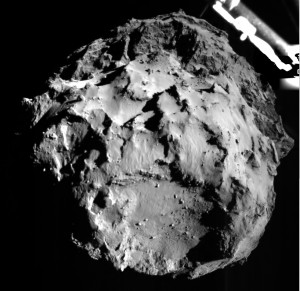MONDAY, 17 NOVEMBER 2014
This mission has been in planning for the last 20 years, and it cost £1 billion. The mother ship 'Rosetta' travelled 6 billion km for the last 10 years until it finally reached 67P; a comet the size of Mont-Blanc that orbits the Sun at about 135,000km/hour. Rosetta orbited this comet for weeks to generate a map of its surface so that the mission controllers back on Earth could choose a landing site. The surface was difficult- full of cliffs and hills. The Philae lander that was released from Rosetta had to touch down on a one kilometre square spot, and it only had a 75% probability of landing. Yet, it succeeded, making this the first time in history that a probe has managed to orbit and land on the surface of a comet.Unfortunately, on the 15th of November, the probe’s batteries ran out and it shut down. Philae had a battery that lasted for 60 hours, and it was equipped with solar panels which would allow it to keep working on solar energy. However, it didn't manage to get enough sunlight to recharge. It sent its last data and went into hibernation. Scientists hope that by August 2015, when the comet gets closer to the Sun, Philae will revive and continue sending data to Earth.
Written by Ornela De Gasperin.

